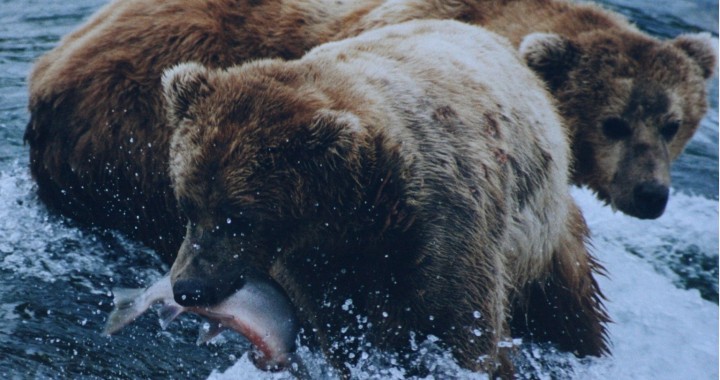According to the Ecosystem-Based Management Tools Network, ecosystem-based management (EBM) “considers the whole ecosystem, including humans and the environment, rather than managing one issue or resource in isolation.” But one of the key aspects of EBM is listed as “Incorporating understanding of ecosystem processes and how ecosystems respond to environmental perturbations.” When it comes to Sockeye Salmon in Alaska, could these two parts of EBM be contradictory?
The Wild Salmon Center argues that not only are salmon important to the people and the ecosystem, they are a keystone species.
“Salmon runs function as enormous pumps that push vast amounts of marine nutrients upstream to the headwaters of otherwise low productivity rivers. Salmon carcasses are the primary food for aquatic invertebrates and fish, as well as terrestrial fauna ranging from marine mammals to birds–eagles, ducks and songbirds–to terrestrial mammals, especially bears and humans.” -Wild Salmon Center
So if salmon are a keystone species, and many other species are relying on them for survival, does it make it okay to manage an ecosystem by focusing on one resource? I would argue that the answer is a decisive maybe. If salmon truly are a keystone species, the “understanding of ecosystem processes” advocated by EBM would require managers to pay special attention to salmon populations. However, I do not think that focusing exclusively on one species would fall into the category of EBM.
Determining whether salmon truly are a keystone species may be an equally difficult matter. National Geographic’s definition of a keystone species is “a plant or animal that plays a uniqueand crucial role in the way an ecosystem functions”, but also goes on to state, “The contributions of a keystone species are large compared to the species’ prevalence in the habitat.” The first definition certainly seems to fit our understanding of salmon, with a 2000 study stating that 137 other species depend on salmon. The second definition seems to be more questionable. The salmon population in the Bristol Bay is very large, which is part of why it has such a big impact on the ecosystem. So the question remains, are salmon a keystone species, and if so how should that impact ecosystem-based management practices?
References:
http://www.ebmtools.org/about_ebm.html
http://www.wildsalmoncenter.org/about/whySalmon.php#footnotes
http://education.nationalgeographic.com/education/encyclopedia/keystone-species/?ar_a=1

